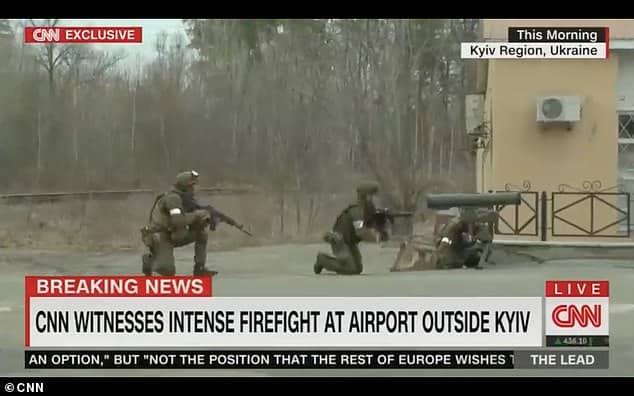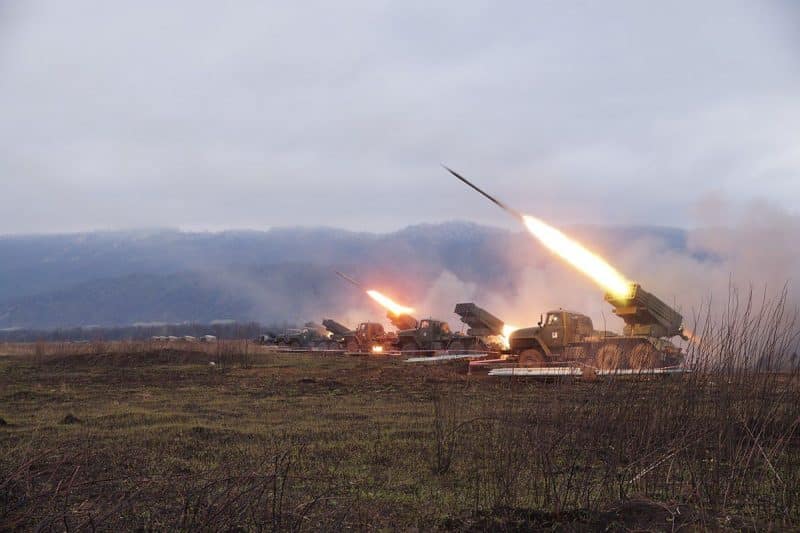5 days after the start of the Russian offensive against Ukraine, it is now possible to better understand the strategies implemented by the various protagonists, and to learn the first lessons concerning the operational capacities of the belligerents, and thus to better understand and anticipate possible developments in this conflict and tensions in Europe.
The Russian invasion plan and the Ukrainian defensive strategy
Clearly, the strategy employed by the Russian forces since the beginning of the conflict responds to a meticulously crafted and long-standing invasion plan. The Russian armies came very close to obtaining a total operational surprise by leading not one but 4 offensives, where the Ukrainian General Staff expected above all an offensive targeting the Donbass. In fact, and from the first day of combat, the Russian assault units reached the suburbs of Kharkiv in the north, and overwhelmed the Ukrainian defenders in the south facing the Crimea. But the most decisive offensive was, for its part, carried out directly against Kyiv from Belarusian territory, something for which the Ukrainians had not actively prepared. The Russian plan was based on a special forces operation to seize the Antonov airport of Hostomel 20 km north of Kyiv, followed by an airborne assault by VDV paratroopers with the mission of penetrating the Ukrainian capital and so decapitate the government before the Ukrainian defenders could react.

The Russian offensive was also based on the massive use of conventional ballistic missiles and cruise missiles aimed at destroying, from the first hours of the engagement, the Ukrainian air and anti-aircraft forces, as well as the command capabilities and communications of opposing armies, and many strategic ammunition and fuel depots. The Russian plan also called for moderate use of artillery and tactical bombing capabilities so as not to antagonize civilians, believing that strategic surprise, initial strikes, air superiority and the decapitation of civilian and military authorities in a dazzling action claiming to be decisive, would suffice to neutralize the Ukrainians' will to resist.
On the Ukrainian side, the defensive strategy was organized above all to contain a possible assault from the Donbass, and a large part of the heavy means of the Ukrainian armies had been deployed preventively on the eastern front. However, the country's civil and military authorities set up reserve units and assembled and armed territorial defense units, with the aim of ensuring the protection of the main cities, including Kharkiv and Kyiv, but also to eventually strike the lower echelons and logistical convoys of the Russian forces, once the main combat force passed. Anticipating major preventive strikes, the Ukrainian military also dispersed its air assets and anti-aircraft defenses, so as to increase resilience to first strikes and maintain airspace contestation capabilities against Russian air power.
Major flaws in the Russian offensive
In fact, Russian strategists were counting on a very short-term operation, and a quick decision on the conflict, as was the case during the intervention in Crimea in 2014, in the Donbass in 2015 or in Georgia in 2008. Consequences From this, it appears that they neglected many determining aspects in the operational preparation of the offensive, this having turned into major failures during the engagements. Thus, it quickly appeared that the majority of the units engaged were in their organic form, and not in the form of an Inter-Arme Battalion, i.e. a battalion/regiment reinforced with means complementary to the engagement such as the artillery, anti-aircraft defence, engineering, etc. Consequently, the inter-arms coordination of Russian units during the offensive is essentially carried out today at brigade level, whereas tactical offensives are , they were carried out at battalion level, significantly deteriorating their operational capabilities.

There are 75% of this article left to read, Subscribe to access it!
The Classic subscriptions provide access to
articles in their full version, and without advertising.
Meta-Defense celebrates its 5th anniversary!

- 20% on your Classic or Premium subscription, with the code Metanniv24
Offer valid from May 10 to 20 for the online subscription of a new Classic or Premium, annual or weekly subscription on the Meta-Defense website.



Comments are closed.